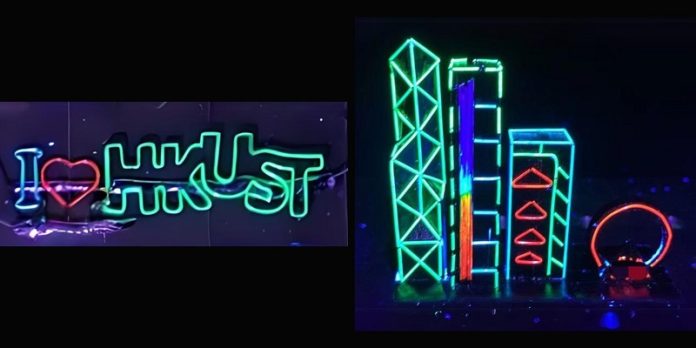
A research team from the Hong Kong University of Science and Technology (HKUST) has developed a groundbreaking technology that could change the future of wearable lighting and display devices.
They have created full-color fiber light-emitting diodes (Fi-LEDs) using perovskite quantum wires (PeQWs), which could lead to advanced, flexible, and bright displays integrated directly into fabrics.
The research, published in Science Advances, showcases how these new Fi-LEDs stand out in the world of flexible electronics.
Fiber LEDs are especially promising for wearable tech because they can be woven into textiles, offering bright and uniform light across large areas.
Metal halide perovskites (MHPs) have emerged as leading materials for next-generation LEDs due to their exceptional light-emitting properties.
However, creating MHP-based fiber LEDs has been challenging.
Problems like uneven coating, poor-quality crystal formation, and complicated manufacturing processes have made it difficult to produce high-quality, efficient Fi-LEDs.
To overcome these obstacles, the HKUST research team, led by Prof. Fan Zhiyong, developed a new method using porous alumina membrane (PAM) templates on thin aluminum fibers. These templates, which have extremely small pores (about 5 nanometers wide), were created using a roll-to-roll solution-coating process. The MHP solution was then filled into the PAM channels, followed by a precise heating process to ensure even crystallization of the PeQWs.
This innovative approach allowed the team to produce uniform and high-quality PeQW arrays, which are crucial for creating bright and consistent Fi-LEDs. The team successfully demonstrated full-color Fi-LEDs that emit red (625 nm), green (512 nm), and sky-blue (490 nm) light. These fiber LEDs are not only flexible but also stretchable, making them ideal for use in wearable technology.
The researchers showcased various designs using these Fi-LEDs, including a full-color string spelling “I ♥ HKUST” and a “night scene” of Victoria Harbor. These examples highlight the potential of Fi-LEDs for creative and practical applications in textiles and displays.
This development represents a significant step forward in the field of flexible electronics. Looking ahead, the researchers plan to improve the efficiency and stability of Fi-LEDs, explore new perovskite materials for a broader range of colors, and work on integrating these innovative devices into commercial textile products.
Prof. Fan expressed excitement about the future possibilities, stating, “Our innovative approach for fiber LEDs opens up new possibilities for fabricating unconventional 3D-structured lighting sources, paving the way for advanced wearable display technologies.”
The research was a collaborative effort, with Ph.D. student Ren Beitao as the first author and contributions from other students and researchers at HKUST, as well as collaborators from Sun Yat-sen University and Nanjing University of Science and Technology.



